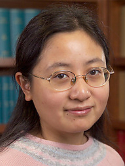| Abstract: |
The presence of mucin pools lacking neoplastic epithelium ("acellular" mucin) in resection specimens of rectal carcinoma after neoadjuvant chemoradiotherapy (CRT) is a well-recognized phenomenon. The current recommendation by the College of American Pathologists is to regard acellular mucin as a type of treatment response and not as residual tumor. However, data-based evidence for or against such an approach is incomplete. In this study, we systematically analyzed the pattern and significance of mucin pools in 108 consecutive, prospectively collected resection specimens from patients who had uT3-4 and/or uN1 rectal cancer and were treated with preoperative long-course CRT. The 108 patients, 39 female and 69 male, had a median age of 58.5 years. With every tumor entirely examined in whole-mount sections, mucin pools were identified in 33 cases (33 of 108, 31%); in 16 (15%) they were all acellular. The mucin pools were focal (10% to 50% of the entire lesion) in 25 cases and extensive (>50%) in 8 cases. Mucin pools were also noted in the lymph nodes in 6 cases (6%); 3 of these were entirely acellular. Five cases had mucin pools in both the primary site and the lymph nodes. When acellular mucin was considered as "no residual tumor," the complete pathologic response rate for the entire cohort was 22% (24 of 108). The pathologic stage of the residual tumor (ypT) was 0 or 1 for 27 cases (25%) and 2 to 4 for 81 cases. The pathologic stage of nodal disease (ypN) was 0 for 83 (77%) and 1 or 2 for 25 cases. When acellular mucin was considered as "residual tumor," the complete pathologic response rate dropped to 17%; ypT was upstaged in 10 tumors and ypN was upstaged in 2 tumors. With a median follow-up of 31 months, the 3-year recurrence-free survival (RFS) was 73% for the entire group. Advanced pathologic response and low pathologic stage of the residual tumor (determined based on the depth of only viable tumor cells) correlated significantly with better RFS. However, the correlation between pathologic response and RFS became insignificant when acellular mucin pools were considered as residual tumor. Neither the presence of mucin pools nor their extent or cellularity had an impact on RFS. Furthermore, none of the 12 patients whose ypT or ypN was upstaged by acellular mucin had recurrent disease (3-y RFS of 100%). Thus, our results suggest that mucin pools in rectal carcinoma after neoadjuvant CRT do not have a significant impact on patient outcome, supporting the College of American Pathologists recommendation that only viable tumor cells, not acellular mucin, are to be interpreted as residual disease in the tumor pathologic staging. © 2010 by Lippincott Williams & Wilkins. |














